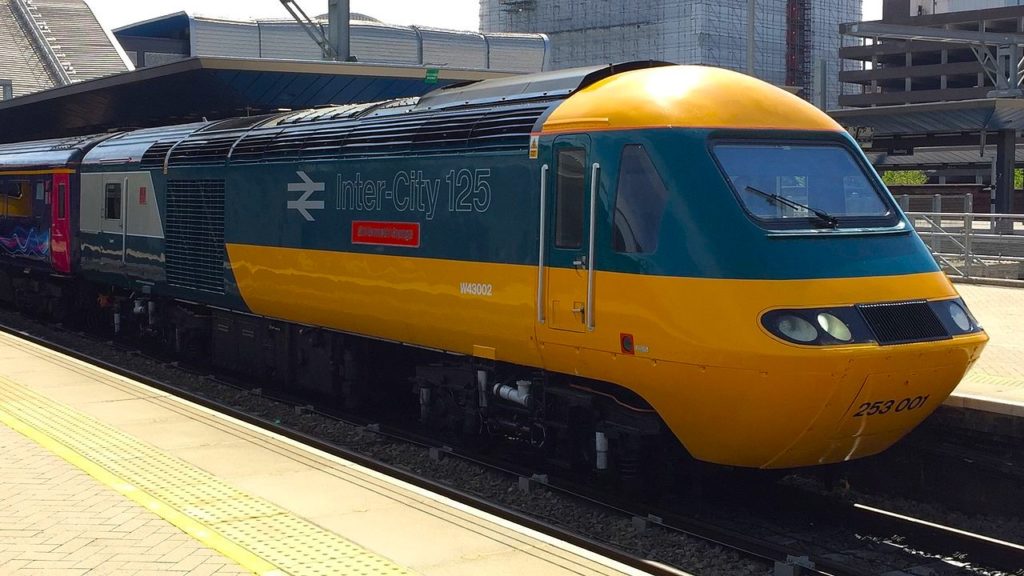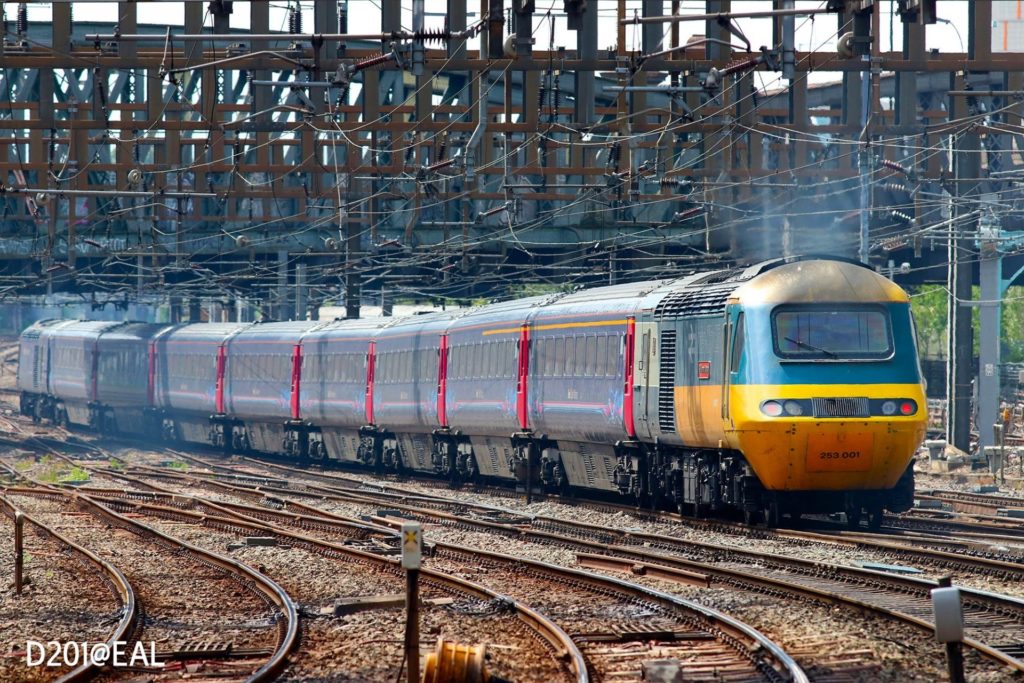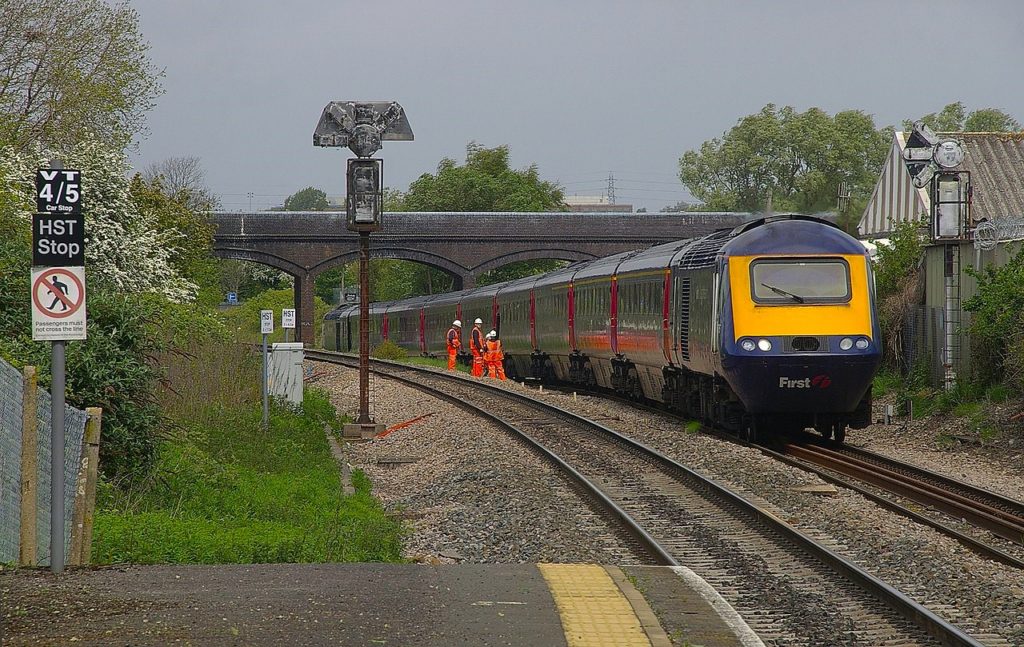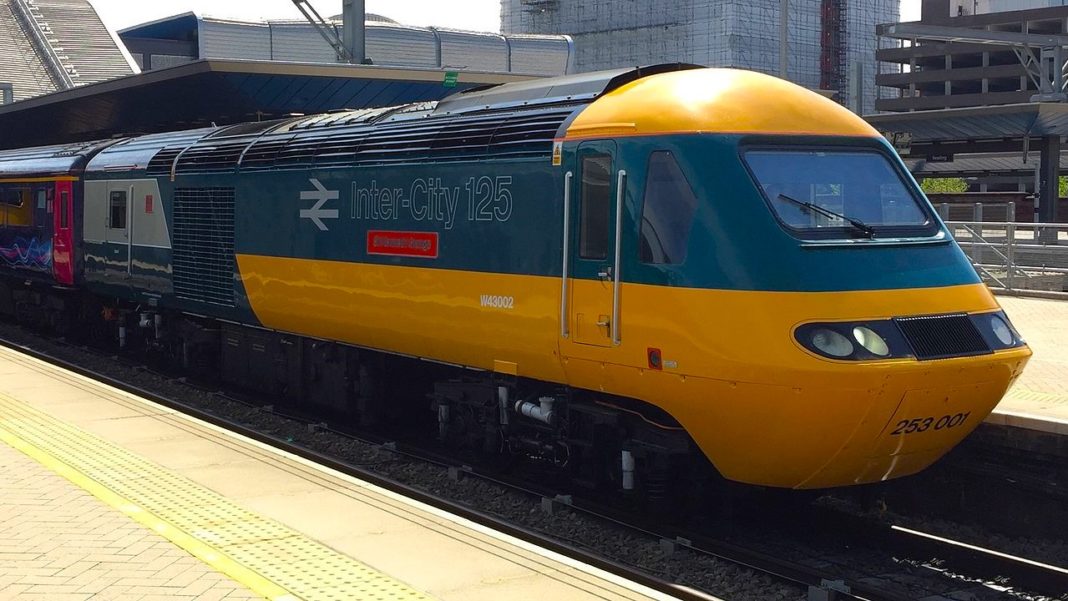The InterCity 125, often abbreviated as the “HST” (High-Speed Train), is a diesel-powered passenger train that was introduced in the 1970s in the United Kingdom. It is known for its distinctive appearance, with a sloping nose at both ends.

A total of 95 sets were produced, each comprising two Class 43 power cars, one at each end, and a rake of seven or eight Mark 3 coaches. The name is derived from its top operational speed of 201 km/h. The prototype InterCity 125 (power cars 43000 and 43001) set the world speed record for diesel traction at 230.5 km/h on 12 June 1973.

A HST also holds the world speed record for a diesel train carrying passengers. On 27 September 1985, a special press run for the launch of a new Tees-Tyne Pullman service from Newcastle to London King’s Cross, formed of a shortened 2+5 set, briefly touched 232 km/h north of York. The world record for the fastest diesel-powered train, a speed of 238 km/h, was set by an HST on 1 November 1987, between Darlington and York with a test run for a new type of bogie for use on Mark 4 coaches on the same route.

The HSTs are now widely considered to be among the most successful trains to have operated on the British railway network, both in terms of their initial impact and their longevity: their introduction into service between 1976 and 1982 resulted in significantly reduced journey times, and large increases in patronage on the routes on which they were operated. The trains proved to be a reliable workhorse, remaining in front-line service for decades. As of September 2023, InterCity 125s remain in service with ScotRail, Great Western Railway, and Network Rail.
According to the Internet














